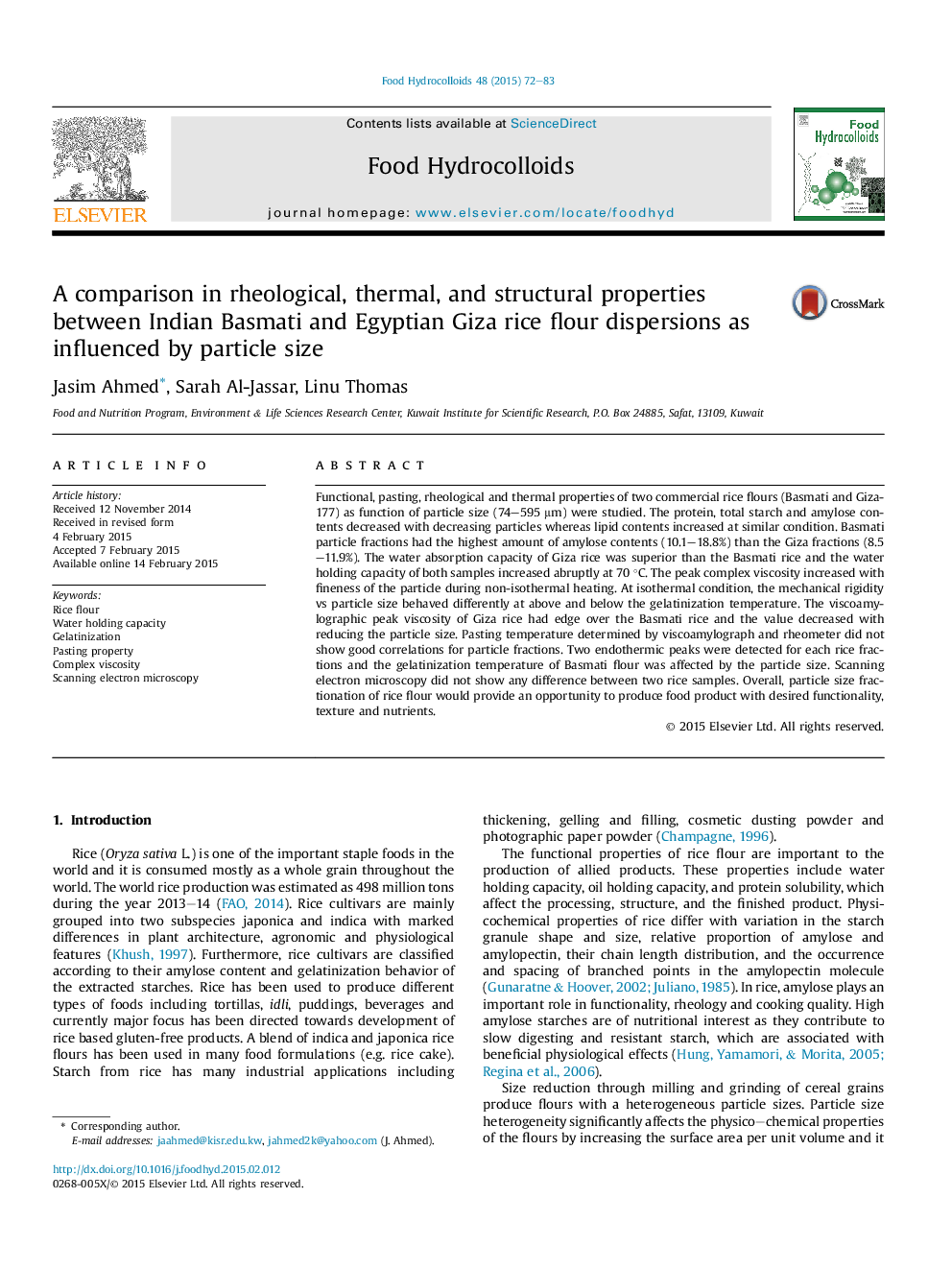| Article ID | Journal | Published Year | Pages | File Type |
|---|---|---|---|---|
| 604299 | Food Hydrocolloids | 2015 | 12 Pages |
•Size reduction significantly affect functional properties between high and low amylose rice flours.•Particle size significantly affect the gelatinization temperature of Basmati rice.•Size reduction affects both pasting and rheological properties.•Oscillatory rheological parameters varied significantly from viscoamylograph data.
Functional, pasting, rheological and thermal properties of two commercial rice flours (Basmati and Giza-177) as function of particle size (74–595 μm) were studied. The protein, total starch and amylose contents decreased with decreasing particles whereas lipid contents increased at similar condition. Basmati particle fractions had the highest amount of amylose contents (10.1–18.8%) than the Giza fractions (8.5–11.9%). The water absorption capacity of Giza rice was superior than the Basmati rice and the water holding capacity of both samples increased abruptly at 70 °C. The peak complex viscosity increased with fineness of the particle during non-isothermal heating. At isothermal condition, the mechanical rigidity vs particle size behaved differently at above and below the gelatinization temperature. The viscoamylographic peak viscosity of Giza rice had edge over the Basmati rice and the value decreased with reducing the particle size. Pasting temperature determined by viscoamylograph and rheometer did not show good correlations for particle fractions. Two endothermic peaks were detected for each rice fractions and the gelatinization temperature of Basmati flour was affected by the particle size. Scanning electron microscopy did not show any difference between two rice samples. Overall, particle size fractionation of rice flour would provide an opportunity to produce food product with desired functionality, texture and nutrients.
Graphical abstractFigure optionsDownload full-size imageDownload as PowerPoint slide
